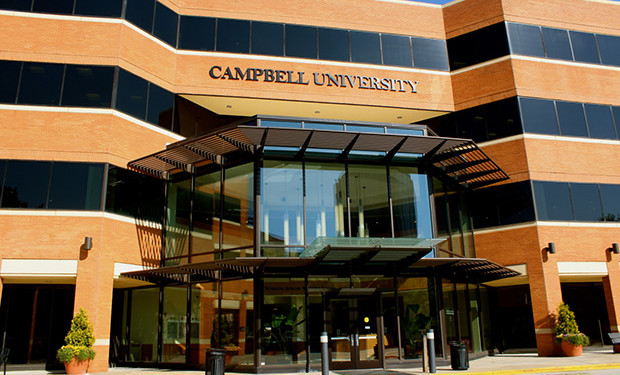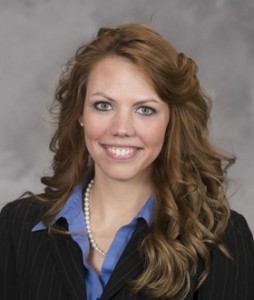Campbell Law School students excel in North Carolina and across the nation: Juvenile Justice Clinic (Wake County)
By: Devon Karst, 2L at Campbell University School of Law
Editor’s Note: The Campbell Law Observer is taking a break from its usual editorial cycle to present first-person accounts from our law students who have enjoyed summer internships across the nation. This is the second of four submissions to be published during the Fall 2014 semester.
The ABA requires that law schools refrain from discussing summer employment with first year students until November. The intent behind this rule is to give students more time to get adjusted to the fast pace of law school and to keep up with their studies. As a result, when November hits the floodgates open. Optional meetings, seminars, and socials – all discussing summer employment. As if the stress of 1L academics are not enough, it is time to start planning what route to take, what jobs to apply for, and thinking about what you really want to do with this law degree you are working so hard to secure.
I decided to start the job search process after my first semester finals. While I think I made a good choice, turning to this task after exams was difficult. People were already wearing suits to class, scoring interviews, and landing jobs, while I was still stuck at step one: What do I really want to do?
Having a friend that was murdered, and being victim of a minor crime myself, I could never envision being able to sufficiently let go of my hatred of the offenders and be able to sit down with them.
Entering law school, I was interested in practicing adoption law and working on foster care reform. I had heard that Campbell Law School had a Juvenile Justice Clinic that worked with at-risk youth. Sensing a potential connection to youth in foster care, I reached out to Professor Jon Powell to discuss the clinic’s mission. I left the meeting with a new admiration for their work and thoroughly impressed by their success on various fronts. By the end of lunch, Professor Powell told me their current student assistant was graduating and they needed a new one. Though I asked for some time to think about it, I knew I wanted the job.
Before I left the meeting, Professor Powell handed me several DVDs to watch that touched on aspects of the clinic’s work. During an unexpectedly snowy spring break in Washington, D.C., I decided to see what they were all about. One involved a murder of a young woman in Texas, whose mother and daughter were seeking clarity and resolution. Her survivors volunteered to be a part of an innovative mediation process designed to facilitate “restorative justice.” The parties involved in this endeavor were the victim’s mother, daughter, and her murderer. It was surreal. The women were able to ask questions about the event and to share insights into their lives both before and after the murder. Many tears were shed by all parties. One side remorseful and regretful for committing such a heinous crime at such a young age, the other coping with the ongoing sadness generated by the violent loss of a loved one. Somehow, by the end of the session, they were comfortable enough to take a picture together and were even laughing. Having a friend that was murdered, and being victim of a minor crime myself, I could never envision being able to sufficiently let go of my hatred of the offenders and be able to sit down with them. I was skeptical of this practice but decided I would keep an open mind.
Only after starting my first mediation did I come to realize that what I really needed to do was to put down the pen and listen.
I gave myself a week after my spring exams to catch my breath before hitting the ground running. I had also secured part-time summer employment with the Wake County Family Court, another wonderful experience, so my week was split between the school and the courthouse. On the first day of work at the Juvenile Justice Clinic, I was able to observe my first of several mediations. Most of the juvenile mediations referred to the clinic are held at various high schools around Wake County. I walked in with my portfolio and pen, ready to jot down everything that happened. Only after starting my first mediation did I come to realize that what I really needed to do was to put down the pen and listen.
The case involved two girls who had been in a physical fight that started over some “he-said, she-said” through text messaging. The girls did not meet in the same room at first. Before bringing the parties together, the mediators have to be sure it is appropriate to do so. After the first young woman came in, Professor Powell introduced us and explained how the mediation process works. He then asked the young woman to share her story. While I was scribbling everything down frantically, Professor Powell just sat back and listened. Then it clicked: Capturing the essence of her comments rather than the specifics of every detail was what was most essential. When the other young girl came in and the process was repeated, I was able to better connect with her and think of and explore ways to work things out. After determining mediation was appropriate we brought the girls together.
Both participants came in with their arms crossed, not wanting to say much or take responsibility. Professor Powell asked them to identify their goals for the mediation. While one of the identified goals was reconciliation, I had no idea how to help make that work. One of the key steps in mediation is humanization. The goal is for both the victim and the offender to see the humanity in each other so that when they are brought together, they are empathetic toward each other. By the end of the mediation, after Professor Powell had help the girls recognize their similarities and the harm each had caused, I realized that the session’s key objectives had been achieved. Upon leaving, they apologized and gave each other a hug. I could not believe it. That was when I truly became excited about the work I would be doing throughout the summer.
The restorative justice approach grew on me as I came to realize that it has the potential to benefit victims as much as offenders.
Over the summer I read books and articles and continued to participate in mediations referred to us by the Wake County Court system. The restorative justice approach grew on me as I came to realize that it has the potential to benefit victims as much as offenders. I had been initially skeptical because the approach seemed to offer offenders the chance to assuage their guilt and show remorse for their crimes with little obvious reward for the victims. Yet over time I came to appreciate the mutual benefits that could accrue. Providing a forum where victims could seek an answer to the frequently unanswered question of “why?” was most prevalent and seemed to be the most satisfying. In regard to my own personal experience, it’s the question I have always wished for the opportunity to ask.
While I may never receive the closure that can come with answers to painful, lingering questions, I am hopeful. I am also continuing my work with the Juvenile Justice Clinic this fall. From a policy perspective, I feel strongly that the restorative justice approach warrants serious consideration by our lawmakers and I hope that the state legislature will advance it, possibly as part of a larger justice reform package. I see clear evidence of the effectiveness of the mediations for the high school students we worked with, and would be excited to see the difference this approach could bring about in the lives of others on a bigger scale.
Devon Karst is a 2L at Campbell University School of Law who will graduate in May 2016. She can be reached by email at dh*********@************ll.edu


